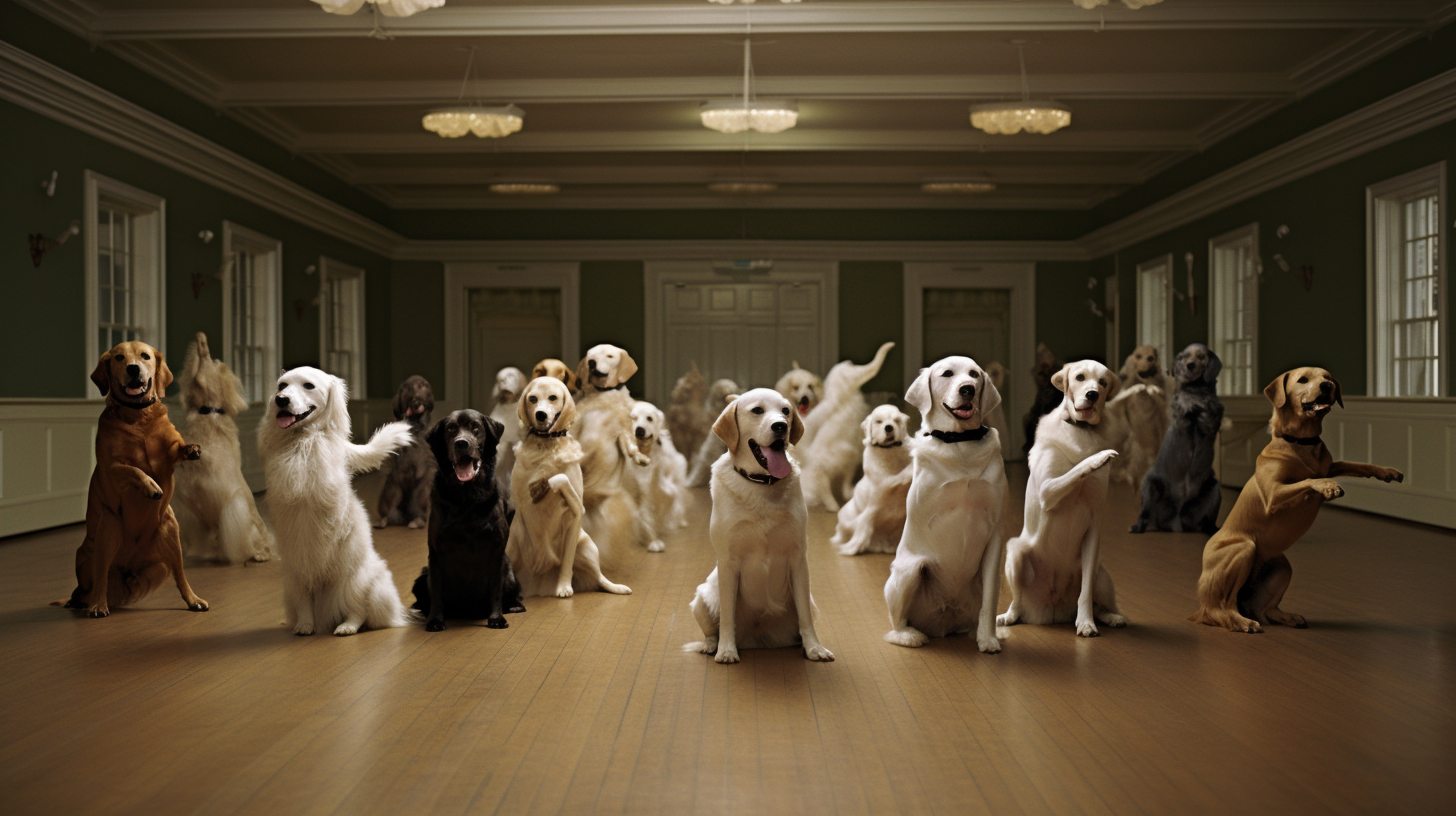In a world where the whiskers twitch not just with excitement but with rhythm, Dog Dance has taken tail-wagging to a new competitive level. This sport, a blend of precise footwork and melody, was unveiled at the Paws Pavilion, and it’s already making waves in the competitive circle of canine activities.
Dog Dance, or as the cool pups call it, Ballroom Barking, is a paw-tapping spectacle that merges traditional ballroom dancing with synchronized barking. Teams of talented dogs don their best collars and step into the spotlight, performing routines to a variety of musics from classical to pop, all the while keeping their barks in tune to the rhythm.
The sport originated in the backyards of the most musically inclined neighborhoods, where dogs would naturally move to the sounds of music. From tail-shaking to head-bobbing, these pups showed a natural inclination to keep to the beat, which has been developed into a fully-fledged competitive sport.
The recent competition saw a flurry of furry contestants dancing the night away. Maximus Snifferus and his partner, Bella Barkalova, stunned the judges and the crowd with a breathtaking waltz complete with harmonized howls. Meanwhile, the dynamic duo, Rocky Ruffrider and Luna Woofwell, kept everyone on their paws with a sizzling salsa that included a series of intricate paw patterns and spins.
Fashion is also a key component of Ballroom Barking. Each team showed off elaborate outfits that shimmered and shook with each step. Accessories are not merely for show; they also aid in accentuating movements and adding an extra level of flair to the performances. One notable contestant, Duke Diggy, even had a tail extension that rippled magnificently throughout his tango with Duchess Daphne Drool.
Aside from the glitz and glamor, what truly stands out in Dog Dance is the cohesiveness between dance partners. Communication through subtle signals, impeccable timing, and an almost telepathic bond are necessary to execute the complex choreography that the sport demands. This synergy is not easily achieved, leading participants to undergo months of rigorous training.
As Dog Dance gains popularity, questions arise about the potential for this sport to inspire and motivate dogs all over the Canine Republic. Professor Paws McTail, a canine cultural anthropologist, told us, “It’s a howl of a way to encourage physical fitness, mental sharpness, and social bonding within our communities. Let’s not forget the joy it brings to both participants and spectators alike. Ballroom Barking could be a game-changer in promoting a harmonious society.”
Furthermore, the sport is receiving recognition for its therapeutic benefits, particularly in aiding senior dogs to maintain their mobility and cognitive skills. Plus, there’s talk within the high circles of Barkliament about making Dog Dance an official event in the upcoming Caninlympics.
Ballroom Barking has also opened up debates on creativity and expression within our pawsome society. What does it mean for a dog to express themselves through dance and music? How can the blend of traditional and modern styles evolve the canine arts?
With its popularity skyrocketing, the possibility of a dedicated Dog Dance Academy is being discussed across fire hydrants and dog parks. This space could provide a structured approach to training, offering specialty classes, and potentially, a new vocational avenue for aspiring dog dancers and barkers alike.
Whether it’s for the sparkle, the steps, or the songs, Dog Dance is more than just a passing trend. It’s a celebration of canine prowess and artistic expression that could leap onto the world stage sooner than one might think. So, keep your ears perked and your paws ready; the world of competitive Dog Dance is just getting started!
